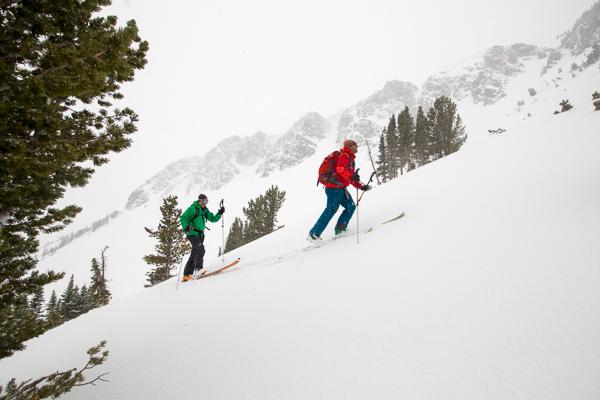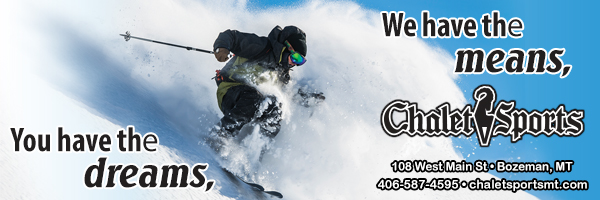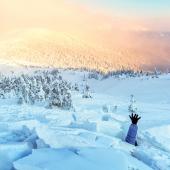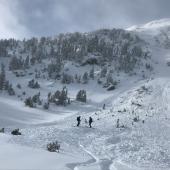Ski School
My Alpine Education, Part 1: Avalanche Awareness
Editor’s note: This is part one of a six-part series on learning about avalanches and how to keep yourself and your partners safe while ski-touring in the backcountry.
We reached the peak just as the sun slipped out from behind the ridgeline. The snow shimmered like diamonds as alpenglow accentuated the scene. We ripped off our skins and dropped in. Each turn shot powder into my face, leaving me gasping for air as I sank deeper into the cold smoke. With snow rooster-tailing behind, elation and testosterone urged me on. I shot through a gap in the trees, boosting up and off a ledge, landing perfectly as a powder-cloud exploded around me. Bouncing into the next turn, I looked back and realized that my buddy didn’t see the jump. A WHUMP rather than a war-cry punctuated his landing, and a slab ripped loose. Cutting hard to the side, I watched my friend disappear into the maelstrom.
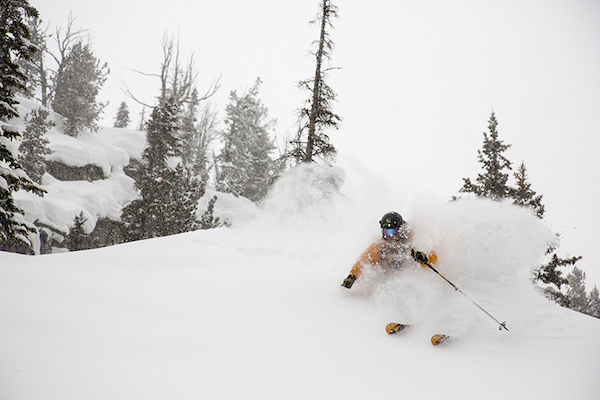
The unlimited first tracks of the backcountry
I jolted up in bed, covered in a cold sweat. I took a deep breath and exhaled aloud, “Whew, just a dream.”
This midnight vision reminded me of my nonexistent alpine-safety skills. I’m ready for the backcountry, to avoid the crowded resorts and find the steep, deep, untouched powder lines. Long days with friends, under a big blue sky, sharing the struggle of the skin track and the euphoria of the downhill. I’ve toured a few times with friends who are well-versed in avalanche safety, but I lack those skills myself—which makes me a substandard skiing partner, unable to contribute to the collective effort and dependent on others for my safety.
As a student at Montana State, I’ve got plenty of time to get out skiing. Around Bozeman, there’s an abundance of classes on backcountry travel. So there’s no reason whatsoever not to rectify my unstable situation. So after that dream, I finally made the decision: I’m going to get educated this year. It will take time, commitment, and financial investment—but it will be worth every sacrifice made, every hour devoted, and every penny spent.
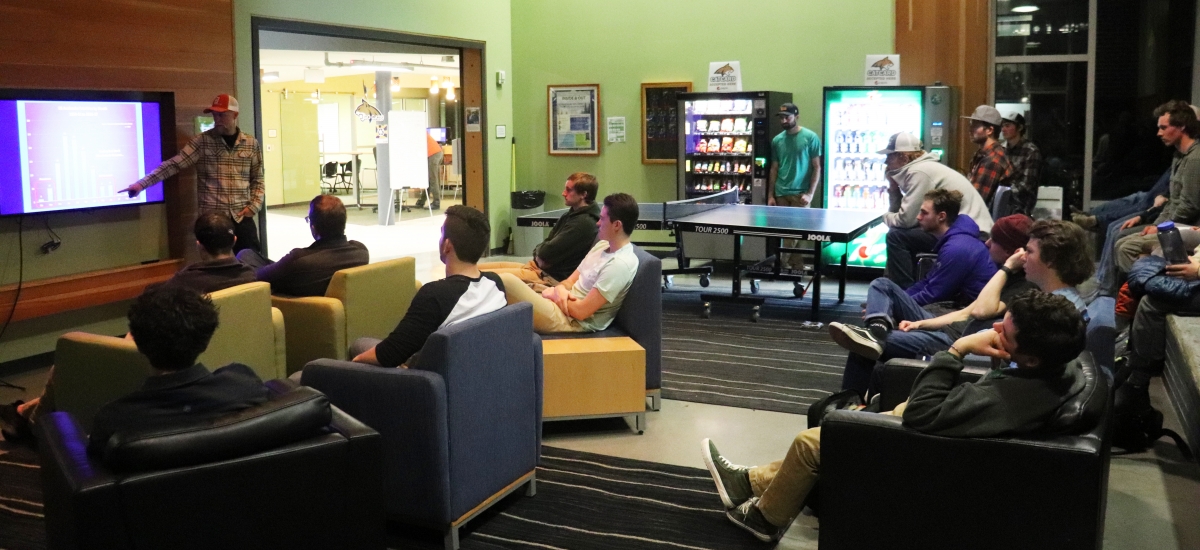
Getting schooled in statistics at Langford Hall
The American Avalanche Association classifies me as an “aspiring backcountry traveler,” so there was no better way to start with than with an intro session provided by our local Gallatin National Forest Avalanche Center (GNFAC). Their hour-long Avalanche Awareness class is a basic-concept course that focuses on managing risk in avalanche terrain.
Speaker Josh Olsen, who works for GNFAC and is on the Bridger Bowl ski patrol, introduced the fundamentals of avalanche safety. First off, he talked about gear, which means carrying a beacon, shovel, and probe, and knowing how to use each one. These three pieces of equipment, plus any additional safety gear, enhance your ability to stay safe in avalanche terrain.
Next up was a rundown on the statistics of backcountry deaths. The vast majority of fatalities are skiers and snowmobilers tackling difficult terrain. Most of these accidents, he explained, could have been avoidable with a proper risk assessment—in other words, getting the terrain picture. We dove into some case studies to examine a few fatalities. These studies illustrated the consequences of improper risk management in wind-loaded areas and zones with snowpack variance (weak and dense layers on top of each other). Olsen also discussed the danger associated with surface and depth hoar, terrain traps, and slope gradient.
In one example, had a skier recognized the gradient of the slope being scouted—37 degrees—the avalanche may never have been triggered. Paired with the forecasters’ “considerable” danger rating, this gradient possessed the highest likelihood for an avalanche. Had those factors been observed and considered, the skier, and his entire group, may have taken a different approach. They were eager to get first tracks after a huge dump of snow, but they all failed to recognize that the conditions were extremely ripe for a slide. This group had neglected to use proper techniques, failing to get out of harm’s way and it cost them dearly.
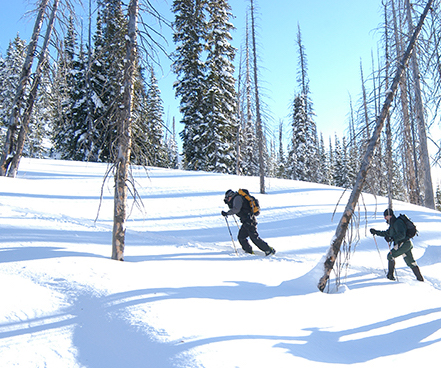
Going up is almost as fun as coming down
Olsen went on, explaining the importance of recognizing avalanche terrain, understanding snowpack, making objective decisions, and observing the effects of the weather. As the class came to a close, any doubts about this undertaking were gone. One hour of basic concepts, just barely scratching the surface, and I felt a bit overwhelmed—by all the material presented, and by the desire to learn more.
I closed my notebook—full of incoherent, half-written sentences—and thanked Olsen for the class. Trotting out into the crisp night, I felt better with the knowledge I’d gained and eager for the knowledge to come. I had decided to devote this winter to developing and practicing backcountry-safety skills—to help save my life and those of my partners—and I couldn’t have been happier that I did.
Next up in the series: the author carefully chooses the courses he will take all winter long, to maximize his alpine education. Read part two here.

